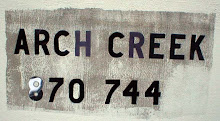Follow-up to this post, excerpting Seymour Hersh's article in the New Yorker (emphasis added).
The Administration may have been willing to rely on dissident organizations in Iran even when there was reason to believe that the groups had operated against American interests in the past. The use of Baluchi elements, for example, is problematic, Robert Baer, a former C.I.A. clandestine officer who worked for nearly two decades in South Asia and the Middle East, told me. “The Baluchis are Sunni fundamentalists who hate the regime in Tehran, but you can also describe them as Al Qaeda,” Baer told me. “These are guys who cut off the heads of nonbelievers—in this case, it’s Shiite Iranians. The irony is that we’re once again working with Sunni fundamentalists, just as we did in Afghanistan in the nineteen-eighties.” Ramzi Yousef, who was convicted for his role in the 1993 bombing of the World Trade Center, and Khalid Sheikh Mohammed, who is considered one of the leading planners of the September 11th attacks, are Baluchi Sunni fundamentalists.
One of the most active and violent anti-regime groups in Iran today is the Jundallah, also known as the Iranian People’s Resistance Movement, which describes itself as a resistance force fighting for the rights of Sunnis in Iran. “This is a vicious Salafi organization whose followers attended the same madrassas as the Taliban and Pakistani extremists,” Nasr told me. “They are suspected of having links to Al Qaeda and they are also thought to be tied to the drug culture.” The Jundallah took responsibility for the bombing of a busload of Revolutionary Guard soldiers in February, 2007. At least eleven Guard members were killed. According to Baer and to press reports, the Jundallah is among the groups in Iran that are benefitting from U.S. support.
The C.I.A. and Special Operations communities also have long-standing ties to two other dissident groups in Iran: the Mujahideen-e-Khalq, known in the West as the M.E.K., and a Kurdish separatist group, the Party for a Free Life in Kurdistan, or PJAK.
The M.E.K. has been on the State Department’s terrorist list for more than a decade, yet in recent years the group has received arms and intelligence, directly or indirectly, from the United States. Some of the newly authorized covert funds, the Pentagon consultant told me, may well end up in M.E.K. coffers. “The new task force will work with the M.E.K. The Administration is desperate for results.” He added, “The M.E.K. has no C.P.A. auditing the books, and its leaders are thought to have been lining their pockets for years. If people only knew what the M.E.K. is getting, and how much is going to its bank accounts—and yet it is almost useless for the purposes the Administration intends.”
The Kurdish party, PJAK, which has also been reported to be covertly supported by the United States, has been operating against Iran from bases in northern Iraq for at least three years. (Iran, like Iraq and Turkey, has a Kurdish minority, and PJAK and other groups have sought self-rule in territory that is now part of each of those countries.) In recent weeks, according to Sam Gardiner, the military strategist, there has been a marked increase in the number of PJAK armed engagements with Iranians and terrorist attacks on Iranian targets. In early June, the news agency Fars reported that a dozen PJAK members and four Iranian border guards were killed in a clash near the Iraq border; a similar attack in May killed three Revolutionary Guards and nine PJAK fighters. PJAK has also subjected Turkey, a member of NATO, to repeated terrorist attacks, and reports of American support for the group have been a source of friction between the two governments. . . .

No comments:
Post a Comment